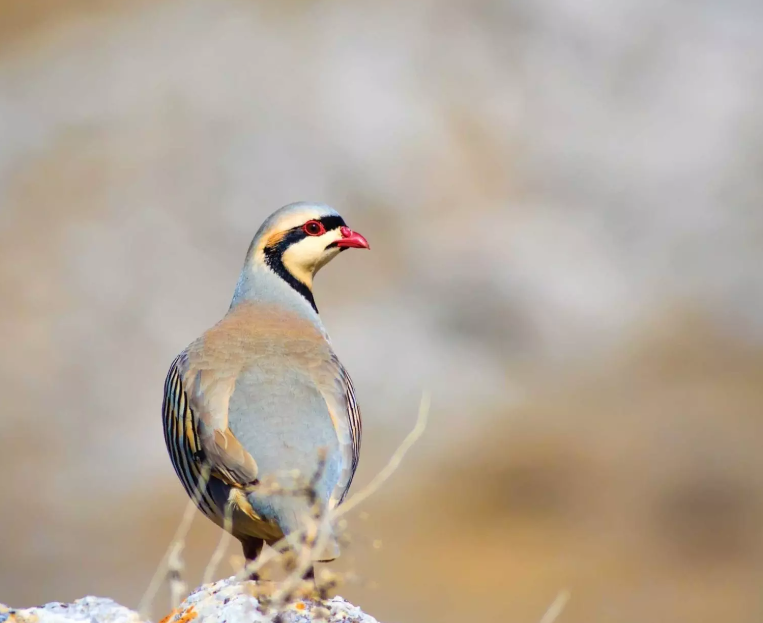The Steppe Eagle, revered as Egypt national bird, stands as a symbol of pride and heritage for this ancient land. With its striking physical attributes and rich cultural significance, this magnificent raptor has etched its place not only in the skies but also in the hearts of the Egyptian people.
The Steppe Eagle: An Overview
Known scientifically as Aquila nipalensis, the Steppe Eagle boasts a wingspan that commands attention. Its plumage, a harmonious blend of browns and whites, contributes to its regal appearance. This bird of prey finds its habitat across the vast expanses of Egypt, primarily in open steppes and grasslands.
Symbolism of the Steppe Eagle in Egypt
Beyond its biological allure, the Steppe Eagle holds a symbolic role in Egypt’s history. Dating back centuries, this bird has been emblematic of strength and resilience, qualities deeply ingrained in the Egyptian ethos. Its portrayal in various artifacts and historical records underscores its importance as a national symbol.
Importance in Egyptian Mythology
Delving into Egypt’s mythological tapestry, the Steppe Eagle emerges as a creature of divine significance. Often associated with deities and cosmic forces, its presence in ancient myths adds a layer of mystique to its already captivating persona. Egyptians believed that the Steppe Eagle served as a conduit between the mortal and divine realms.
Egypt National Bird: Conservation Efforts
While the Steppe Eagle once soared abundantly across the Egyptian skies, conservation efforts have become crucial in contemporary times. The species faces challenges such as habitat degradation and climate change. Various initiatives, including habitat restoration and public awareness campaigns, aim to secure a stable future for the Steppe Eagle in Egypt.
Steppe Eagle Behavior and Migration
In understanding the Steppe Eagle, it’s essential to unravel its behavioral traits and migration patterns. These birds exhibit fascinating behaviors, from their hunting strategies to their communal roosting habits. Moreover, the Steppe Eagle embarks on impressive migratory journeys, covering vast distances and connecting ecosystems across borders.
Role in the Ecosystem
As a keystone species in the Egyptian ecosystem, the Steppe Eagle plays a vital role in maintaining ecological balance. Its predatory nature helps control the population of certain species, preventing overpopulation that could disrupt the delicate harmony of the environment.
Threats to the Egypt National Bird
Despite its resilience, the Steppe Eagle faces threats that demand urgent attention. Human activities, including habitat destruction and illegal hunting, pose significant risks to the species. Conservationists work tirelessly to address these challenges and secure a sustainable future for the Steppe Eagle in Egypt.
Conservation Organizations in Egypt
Several organizations in Egypt are at the forefront of Steppe Eagle conservation. Collaborative efforts between governmental bodies, non-profits, and local communities aim to address the root causes of the threats facing the species. These initiatives encompass research, education, and on-the-ground conservation activities.
Cultural Events Celebrating the Egypt National Bird
Throughout the year, Egyptians celebrate the Steppe Eagle through various cultural events and festivals. These gatherings not only showcase the bird’s significance but also foster a sense of community engagement in its conservation. The Steppe Eagle becomes a focal point, reminding the public of the importance of preserving Egypt’s natural heritage.
Steppe Eagle in Egyptian Art and Literature
Artists and writers throughout history have drawn inspiration from the Steppe Eagle, creating masterpieces that immortalize the bird’s grace and power. From ancient hieroglyphs to contemporary paintings, the Steppe Eagle continues to leave an indelible mark on Egypt’s artistic landscape.
Fascinating Facts About the Steppe Eagle
- The Steppe Eagle can cover vast distances during its migration, sometimes exceeding 10,000 kilometers.
- These birds are known for their impressive soaring abilities, riding thermal currents for extended periods.
- Steppe Eagles are monogamous, forming strong pair bonds that last for multiple breeding seasons.
FAQs about the Egypt National Bird
Q1: What is the significance of the Steppe Eagle in Egyptian culture?
In Egyptian culture, the Steppe Eagle symbolizes strength, resilience, and a connection to the divine. It has been a revered national symbol for centuries.
Q2: How can individuals contribute to Steppe Eagle conservation?
Individuals can contribute by supporting conservation organizations, participating in awareness campaigns, and promoting responsible environmental practices.
Q3: What is the current population status of Steppe Eagles in Egypt?
The Steppe Eagle population in Egypt faces challenges, and accurate population figures may vary. Conservation efforts are crucial to monitor and protect their numbers.
Q4: Are there specific laws in Egypt protecting the Steppe Eagle?
Egypt has wildlife protection laws, and the Steppe Eagle is included. However, effective enforcement is essential to ensure their conservation.
Q5: How does climate change impact the Steppe Eagle’s habitat?
Climate change can affect the availability of prey and nesting sites, influencing the Steppe Eagle’s behavior and survival.
References
- BirdLife International. (2022). Aquila nipalensis. The IUCN Red List of Threatened Species.
- Egyptian Environmental Affairs Agency. (2022). Wildlife Conservation in Egypt.
- Meyburg, B. U., & Paillat, P. (2013). Steppe Eagle: Global Conservation and Research Priorities. Journal of Raptor Research, 47(4), 352–359.
Conclusion
In concluding our exploration of Egypt’s national bird, the Steppe Eagle, it is evident that this majestic creature goes beyond being a symbol; it is a vital thread woven into the cultural and ecological fabric of the nation. As we appreciate its beauty and significance, let us also acknowledge our role in ensuring its continued presence for generations to come.
Featured Image Credits: freepik

